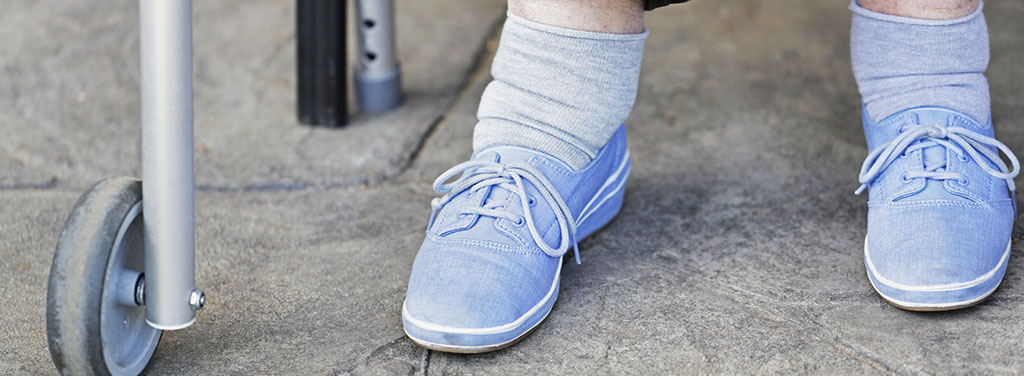Compression Therapy
 Circulation issues stop oxygenated blood from reaching the wound bed, which decreases the healing rate. Compression therapy applies an elastic garment to a leg, compressing it with graduating pressure that is strongest at the ankle, and gradually decreases as it moves up the leg. This non-invasive therapy decreases swelling in the legs, enabling oxygenated blood to reach wounds more easily and resulting in a greater chance of healing.
Circulation issues stop oxygenated blood from reaching the wound bed, which decreases the healing rate. Compression therapy applies an elastic garment to a leg, compressing it with graduating pressure that is strongest at the ankle, and gradually decreases as it moves up the leg. This non-invasive therapy decreases swelling in the legs, enabling oxygenated blood to reach wounds more easily and resulting in a greater chance of healing.
This treatment is prescribed by a physician to treat phlebitis, thrombosis, vein surgery aftercare, and to relieve all manifestations of chronic venous disease (heavy legs, varicose veins, oedemas, leg ulcers). It can also be prescribed to decrease venous pressure and prevent venous stasis. Compression therapy has been shown to prevent reoccurring wounds and improve the healing rate by 30%-50%.
Contraindications of compression therapy include advanced peripheral obstructive arterial disease, congestive heart failure, septic phlebitis, oozing dermatitis, and advanced peripheral neuropathy.
The two major types of compression products are bandages and medical compression hosiery (socks, stockings, tights, and sleeves). The choice between the two depends on several factors such as medical condition and duration of treatment. In addition, compression products are available in four different degrees of compression (classes 1-4) depending on the severity of the condition being treated, with class 1 providing the lightest compression and class 4 providing the heaviest compression. It is important to discuss all factors with your doctor in order to decide which compression product and degree of compression is right for you.
